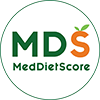Healthy Cooking Columns
Got Lactase?
Lactose, often called milk sugar, is a carbohydrate made up of two sugar molecules (glucose and galactose) bound together. The enzyme lactase is responsible for breaking the bond that holds the two sugar molecules together and is manufactured by cells that line the small intestine. There are a number reasons that people don’t have the ability to produce lactase (a discussion too extensive for this column). The most interesting fact is that a whopping 70% of the world’s population has some degree of primary lactase deficiency.
Ethnicity has a lot to do with this. For instance, northern Europeans have only about a 2% incidence of lactase deficiency while that number is in the 65% range for Hispanics, 70% for blacks and near 100% in Asians. Both Ashkenazi Jews and American Indians have a high proportion of their population who are lactose intolerant as well.
The most important issue centers around the concept of “dose dependence.” Put simply people will sometimes not have side effects to a medication or substance until they consume over a certain amount. The side effect is “dependent” on the “dose.”
Such a concept is emphasized by the Guidance Statement in this month’s journal Pediatrics (2006;118:1279-1286). In an excellent review of lactose intolerance in infants, children and adolescents, Dr. Melvin Heyman notes that ‘the amount of lactose that will cause symptoms varies from individual to individual, depending on the amount of lactose consumed, the degree of lactase deficiency and the form of the food substance in which the lactose in ingested.’
This is true for children and adults who have trouble with eating foods that contain lactose. Some can have 1/2 cup of milk on their cereal and not have problems but will experience symptoms if they drink a full glass of milk. Others will have problems with as little as two tablespoons. Many people who cannot tolerate fresh milk can eat milk that has been cultured’like sour cream, yogurt and cheese’but, again, there are those who have problems with even these.
There’s no specific level where this might cause issues. The list below is a guide to the amount of lactose in common dairy products:
| Ingredient | Amount | Lactose content |
| Lowfat yogurt | 1 cup | 8.4 grams |
| Whole milk | 1 cup | 12 grams |
| Buttermilk | 1 cup | 9.1 grams |
| Skim milk | 1 cup | 10.8 grams |
| Cheddar cheese | 1 ounce | 0.2 grams |
| Vanilla ice cream | 1 cup | 9.8 grams |
| Low-fat cottage cheese | 1 cup | 4.6 grams |
| Light cream cheese | 1 ounce | .01 grams |
Looking at the amount of sugars on a package can help you as well. Since lactose is considered a sugar if there is no or very little sugar in a product it will likely have little lactose. Goat cheese, for instance, has only 1/3 gram of sugar in an ounce and is generally well tolerated by many with lactose intolerance.
The recipes on the web site have been sorted into three categories: Lactose Free, Cheese-Containing Recipes and Borderline Recipes. The Borderline category has dishes that have some milk but may not be a problem because there’s little milk or dairy products used. Some people may be able to tolerate these and others not. Even so, for most people with lactose intolerance, trial and error is the only way to know for sure just how much dairy will cause a problem.
For those who are very sensitive, hidden lactose can be a major problem. Often lactose is added to manufactured foods and those with very low tolerance for lactose should be aware of this. These foods can include:
- breads and other baked goods
- breakfast cereals
- instant potatoes
- instant soups
- instant breakfast drinks
- margarine and spreads
- lunch meats (other than kosher)
- bottled salad dressings
- packet salad dressing mixes
- many candies
- snack foods such as chips and crackers
- pancake mixes
- biscuits mixes
- cookie mixes
- powdered meal-replacement supplements
Many products that are labeled non-dairy can be made with ingredients that are derived from milk products and will sometimes contain lactose. These include:
- powdered coffee creamer
- whipped toppings
- puddings
- pudding mixes
Eating healthy is about knowing what is in the foods you are consuming. It is always best to make fresh whole foods but if you are going to use prepared foods read the label carefully. Ingredients other than milk can be an indication that something contains lactose. Generally such products affect only those with the most severe lactose intolerance. Look for words like:
- whey
- curds
- milk by-products
- dry milk solids
- non-fat dry milk powder.
Interestingly, about 20% of prescription and 6% over the counter medications contain lactose. This includes many types of birth control pills as well as tablets for indigestion, stomach acid and gas.




